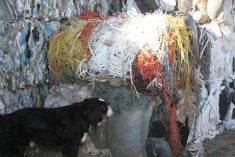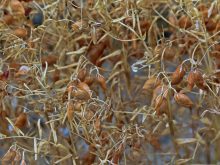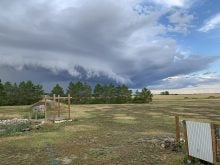WOODSTOCK, Ont. – Seed companies are hoping to write a new chapter in the corn story as the crop makes inroads in Western Canada.
“There was a group of corn dealers and growers from Manitoba here who wanted to go through our plot,” Derek Freitag of Monsanto said of his company’s “evolution of corn” plot at the recent Outdoor Farm Show in Woodstock.
“There are also a lot of grazing farmers in Manitoba, Saskatchewan and Alberta interested in trying corn.”
Graham McGregor, also of Mon-santo, who came up with the “evolution of corn” idea, said the only significant amount of grain corn grown in Western Canada is in southern Manitoba.
Read Also

Message to provincial agriculture ministers: focus on international trade
International trade stakeholders said securing markets in the face of increasing protectionism should be the key priority for Canada’s agriculture ministers.
Corn is also grown for silage on the southern Prairies.
Relatively new is the use of corn as a standing crop to feed cattle in the fall, McGregor said. The cattle will begin with the cobs and move to the leaves and stalks. It’s a maintenance diet, an alternative for cow-calf operators and others looking for affordable fall feed.
“There are a lot of guys on the Prairies interested in this. It is a cheap way to feed cattle,” McGregor said.
He said the plot at the Outdoor Farm Show is a useful aid in showing western farmers how corn has evolved over the centuries. The maintenance of wild and heritage varieties is also important to maintaining genetic diversity.
“I think it’s important for today’s farmers to see where corn originated, to see how it has advanced in just a few decades, and to see that the genetics used 50 or 100 years ago are being maintained,” McGregor added.
Tracing its roots
Teosinte is recognized as a primary ancestor to today’s corn varieties. It grew wild in Mexico and was domesticated between 8,000 and 5,000 BC. The grain is similar in appearance to velvetleaf seed and the plant grows one to two metres tall.
Over the centuries, two main types of corn developed, thanks to the activities of indigenous seed savers.
Early maturing varieties tend to have more flint characteristics: hard, rounded kernels with a higher test weights. Longfellow flint appeared in the southwestern United States 3,000 years ago and was in the northeastern part of the continent by the 1600s.
Dent varieties appeared in the U.S. 500 years ago. Today, high-yielding, dent types are predominant in Ontario and the U.S. corn belt.
About 50 percent of today’s dent varieties can trace their lineage to Reid Yellow Dent, developed through an accidental cross by Robert Reid in Illinois in 1847.
The scientific breeding of open-pollinated varieties began in the late 1800s. Inbred and crossbred studies began in the early 1900s. By the 1940s, most North American farmers were growing hybrid varieties.














